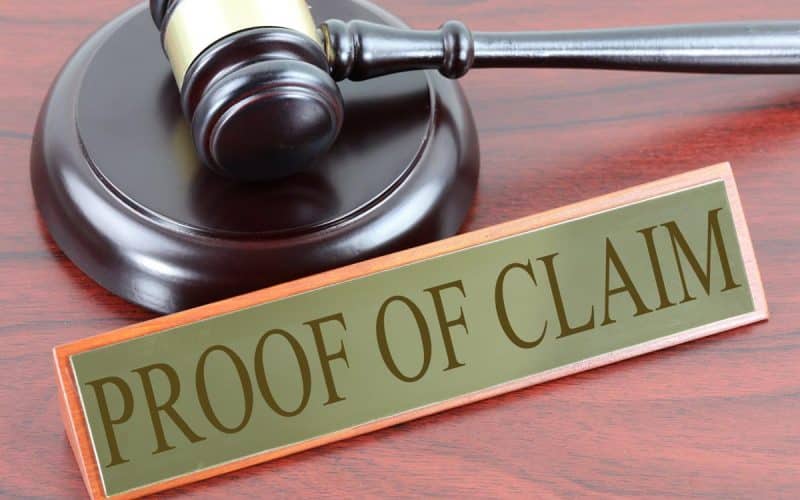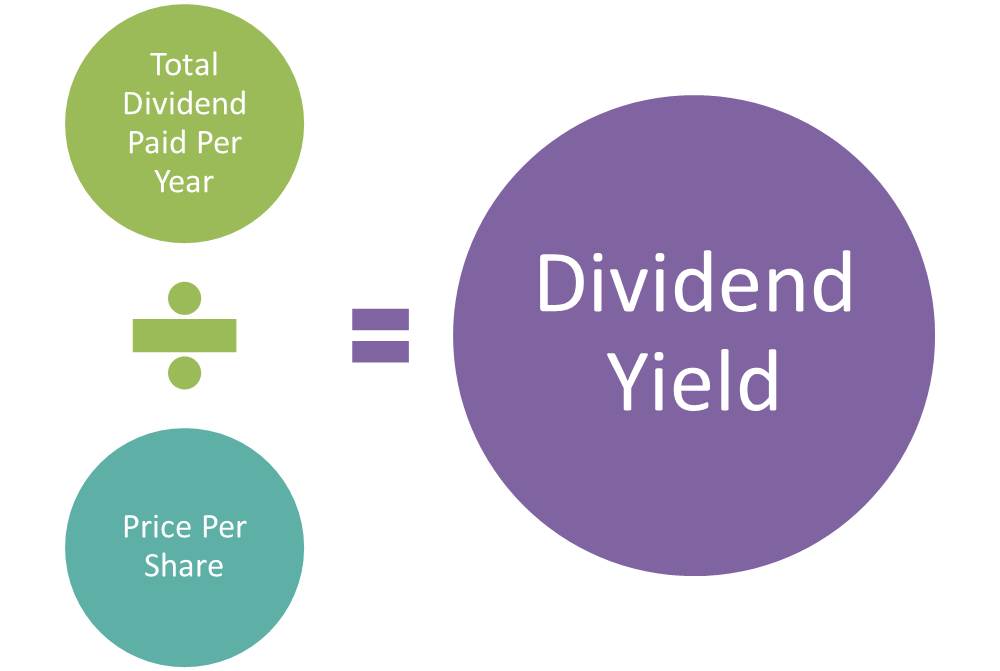A proof of claim is the documentation that a creditor must submit before receiving payment in a bankruptcy case. Some debts, such as income taxes and domestic support commitments, have “priority” status in the bankruptcy payment system. You are to settle it before other claims.
The proof of claim informs the bankruptcy trustee about the type of claim as well as the amount owed to a creditor. Continue reading to find out who can file a proof of claim form of bankruptcy, how to file one, and how to object to one.
Who needs to file a Proof of Claim?
All creditors who want to be compensated from bankruptcy assets must file a proof of claim. (FRBP 3002.) On December 1, 2017, the law was amended to clarify that, in Chapters 7, 12, and 13, a protected, unsecured, or equity secured creditor (with a few exceptions) must file a proof of claim to obtain money from the bankruptcy estate.
Of instance, if assets are not eligible for distribution, as in a Chapter 7 “no-asset” scenario, a borrower would not be instructed to file a proof of argument. If the trustee discovers hidden assets during the review period, the trustee’s status will change. The trustee would then direct creditors to provide a proof of claim.
Liens and Secured Creditors
A secured creditor, such as a mortgage or auto lender, must file a lawsuit, just like any other creditor. This is to collect money from the bankruptcy estate (with a few exceptions). However, even though the secured creditor fails to file a proof of claim, the creditor’s lien will not be lost.
This law can be difficult for a debtor in Chapter 12 or Chapter 13 situation. Why is this so? When a lien is in place, the debtor will retain the property used to secure the debt only if he or she stays current on the loan. If the debtor fails to pay as agreed, the creditor will repossess the property. The creditor can also sell it at auction, and use the proceeds to pay off the loan.
In practice, if a protected lender fails to file a proof of claim in Chapter 12 or 13 cases (and therefore does not obtain monthly plan payments), a debtor who wishes to retain the property securing the claim (such as a house or car) has two choices.
The debtor may make payments to the creditor directly (instead of through the plan). However, if the debtor has agreed to make the payment directly, it is unlikely that it would be necessary. The majority of the debtor’s funds go into the plan, leaving none for a large payment.
Fill out a proof of claim form for the creditor. On behalf of the creditor, the debtor may file a proof of claim. This allows the trustee to use bankruptcy agreement fees to keep the guaranteed payment.
When Would a Proof of Claim Be Filed in Bankruptcy Cases Under Chapters 7, 12, and 13?
In Chapter 7, 12, or Chapter 13 bankruptcy case, the deadline for filing a proof of claim for non-governmental creditors is 70 days after the petition filing date. (On December 1, 2017, the previous deadline of 90 days after the first creditors’ meeting was shortened to the current period.) Government agencies have more time. They must file a proof of claim within 180 days of the date the order for relief was issued.
The deadline for filing proofs of claim is included in the first notice sent to creditors. This notice tells creditors that a petition has been filed and specifies the date for the creditors’ meeting. This notice further specifies the deadline for filing objections to the discharge.
While the court does not normally grant extensions after the deadline has expired, it does have the authority to do so if a borrower demonstrates extenuating circumstances.
What Information Does a Creditor Provide in a Proof of Claim?
What the creditor must include in its proof of claim is as follows.
Claim Formal Proof
A proof of claim must largely adhere to the official bankruptcy form, Proof of Claim (Form 410). All official proof of claim bankruptcy forms, including Form 410, are available for download from the U.S. Bankruptcy Forms from the Courts.
The following details must be provided by a creditor:
- the name of the debtor and the bankruptcy case number
- data about the borrower, like a mailing address
- the sum owed as of the date of the petition
- the grounds for the allegation. (for example, purchased goods or services, a loan or credit card balance, or a personal injury or wrongful death award), and
- the kind of assertion (secured or unsecured).
As proof of the allegation, the creditor should attach supporting documents, such as the contract. Forms for official attachments are available. The proof of claim must also be signed by the creditor or an approved representative.
Informal Argument Proof
Some courts will consider an informal proof of claim from a borrower if it meets the following five criteria:
- The evidence is written down.
- Writing containing a claim for payment from the bankruptcy assets.
- The writing reflects the estate’s desire to keep it accountable.
- The document has been filed with the bankruptcy court, and
- Allowing the assertion would be reasonable under the circumstances.
While a bankruptcy judge would consider these conditions, the decision on whether to accept an informal proof of claim is ultimately up to the bankruptcy judge.
Objecting to a Claim Proof
Unless the debtor, trustee, or another interested party objects, the court normally acknowledges the proof of claim and its specified number.
Some of the most common reasons for someone to object to an argument are as follows:
- The amount is wrong.
- Incorrect interest or other penalty charges are included in the lawsuit.
- When it is not a priority or protected argument, the claim means that it is.
- The creditor lodged the lawsuit in order to annoy the debtor, or
- The creditor failed to provide supporting documents.
To object to a creditor’s allegation, the objecting party must file a formal objection with the bankruptcy court and serve a copy as well as the notice of hearing on the creditor, debtor, and trustee for at least 30 days before the scheduled hearing.
Who Has the Right to Object to a Chapter 7 Bankruptcy Claim?
In a Chapter 7 bankruptcy case, only a “party in interest” may object to a lawsuit. A “party in interest” is an individual or organization with a financial stake in the results of the claim under consideration.
Generally, the Chapter 7 trustee will object to proofs of claim in a Chapter 7 bankruptcy case. However, a Chapter 7 debtor may be required to respond to a claim as well. A Chapter 7 debtor will do so if the existing charges, as they currently stand, will cause the debtor to lose more property than required or cause the debtor to owe more than the debtor should after the bankruptcy case is completed. This is generally only the case if there is a problem with a nondischargeable priority argument, such as taxes or a domestic help duty.
Furthermore, the majority of bankruptcy courts have ruled that a Chapter 7 debtor will respond to claims if he or she can demonstrate:
- Since there is likely to be money left over after all claims are settled, the debtor has a financial interest in the outcome (this is rare in a Chapter 7 case)
- The trustee acted unjustifiably in failing or refusing to respond to the claim or claims at issue, or
- The debt owed by the debtor cannot be discharged.
The responsibility is on the objecting party to provide ample proof demonstrating that the creditor’s argument should not be accepted. If the objecting party provides such proofs, the creditor’s burden of proof moves back to them to justify their point.
Who Has the Right to Object to a Chapter 13 Bankruptcy Claim?
As previously stated, any interested party can object to a claim in a Chapter 13 bankruptcy case.
Common Mistakes To Avoid When Filling Proof Of Claims
In preparing a proof of claim document, there are certain mistakes that will not be overlooked by the court and should therefore be avoided. Some of these mistakes are;
#1. Sending the original documents to the court.
Since you are likely not to get these documents back, it is important you submit copies and not the original.
#2. Mistaking Debtors And Creditors Form
Oftentimes, people mistake the creditor’s form for the debtor’s form and this has to be avoided.
#3. Wrong Case Number
You have to register your claim with a case number, make sure you use your exert case number, not another one.
#4. Signature And Date
There are cases where people fail to enclose their original signature in the form, this automatically disannuls claims. Make sure you sign and date your signature whether through mail application or online application.
How long does a creditor have to file a proof of claim?
The time frame for filing a proof of claim varies depending on the type of bankruptcy case and the jurisdiction in which the case is filed. In general, a creditor must file a proof of claim within 90 days of the first meeting of creditors in a Chapter 7 case, or within 180 days of the filing of the case in a Chapter 11 or Chapter 13 case.
What happens if a creditor does not file a proof of claim?
If a creditor does not file a proof of claim, the creditor may not be able to receive payment from the assets of the bankruptcy estate. Additionally, the creditor may be barred from objecting to the discharge of the debt in the bankruptcy case.
Can a proof of claim be amended or withdrawn?
A proof of claim can be amended or withdrawn in some circumstances, depending on the type of bankruptcy case and the jurisdiction in which the case is filed. Generally, a proof of claim can be amended if the creditor discovers new information about the claim, and it can be withdrawn if the creditor no longer wishes to assert the claim.
What is the role of the bankruptcy trustee in the proof of claim process?
The bankruptcy trustee is responsible for reviewing and verifying the validity of proofs of claim filed in the bankruptcy case. The trustee may object to a proof of claim if it appears to be fraudulent or if it is not supported by sufficient documentation.
How is the amount of a proof of claim determined?
The amount of a proof of claim is typically determined by the terms of the underlying contract or agreement between the creditor and the debtor. If there is a dispute about the amount of the claim, the bankruptcy court may have to resolve the dispute.
Important Takeaways
In order to be paid in a bankruptcy case, a claimant must file a proof of claim form (although filing does not guarantee payment). The form lists any unpaid debts that the creditor says the debtor owes them, as well as any supporting information and evidence.
To decide the creditors are liable for payment, the bankruptcy trustee may review all proof of claim forms and any objections.
Proof Of Claim FAQ’s
What needs to be in a Proof of claim?
What information do I need to fill out a Proof of Claim form?
- Debtor’s Information: Debtor’s Name and the relevant Bankruptcy Case Number.
- Creditor’s Information: Name of contact person, contact information (including phone, email, and mailing address
How do I get a proof of claim form?
Completing a proof of claims form
- Name of debtor: …
- Case number: …
- Name of creditor: …
- Name and address where notices should be sent: …
- Account or other number by which creditor identifies debtor: …
- If this claim replaces or amends a previously filed claim
What is a proof of claim letter?
What is a Proof of Claim? A Proof of Claim is a written assertion to the bankruptcy court, trustee, debtor and other interested parties that you, the creditor, wish to assert your rights to a distribution in a bankruptcy case
Why would a creditor not file a proof of claim?
Why Would a Creditor Not File a Proof of Claim? … A creditor might not file a proof of claim in your bankruptcy if: you have a no-asset Chapter 7 bankruptcy (meaning you don’t have any property the bankruptcy trustee can distribute to your creditors, so they won’t get paid) you owe the creditor a very small sum,






